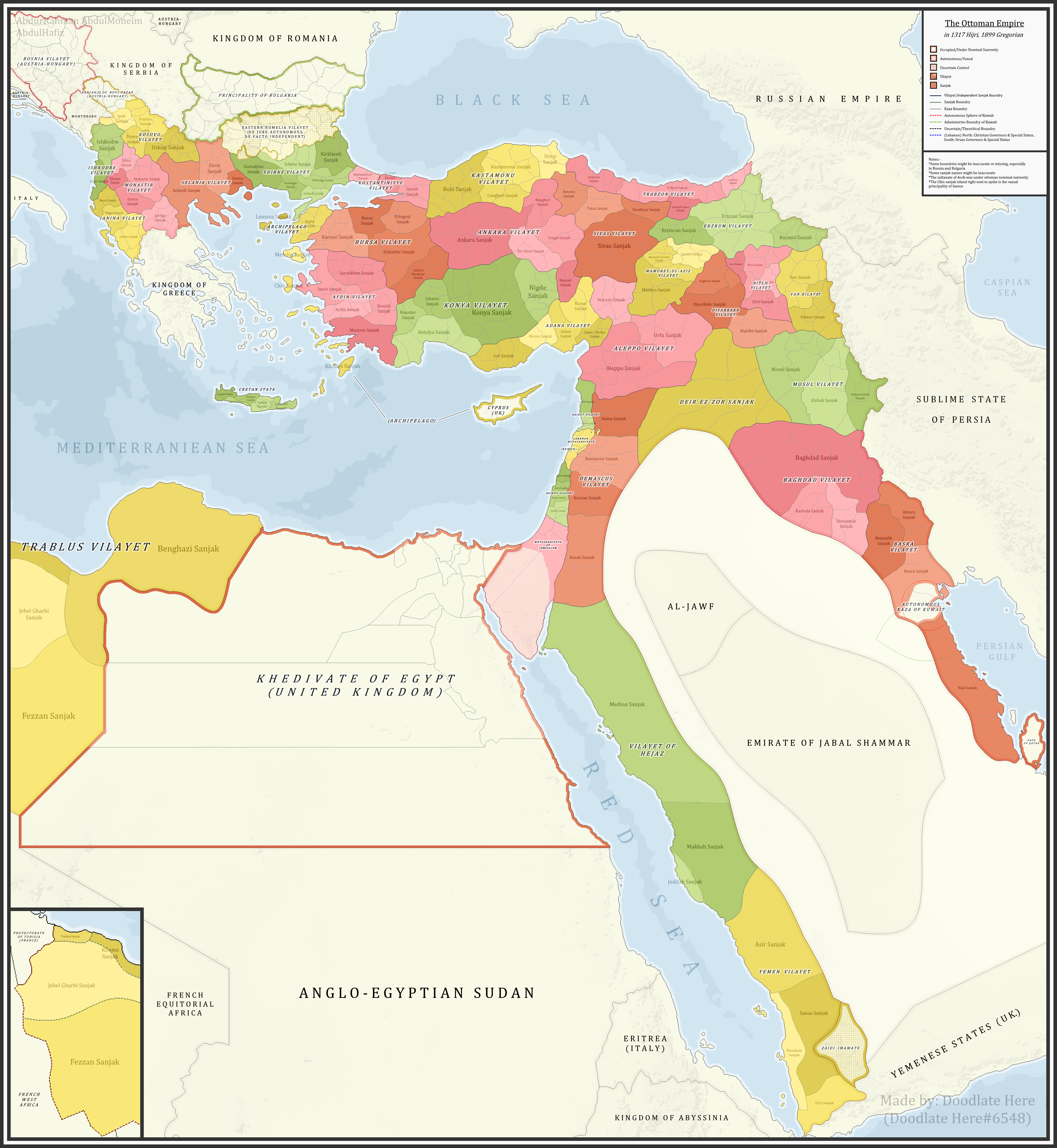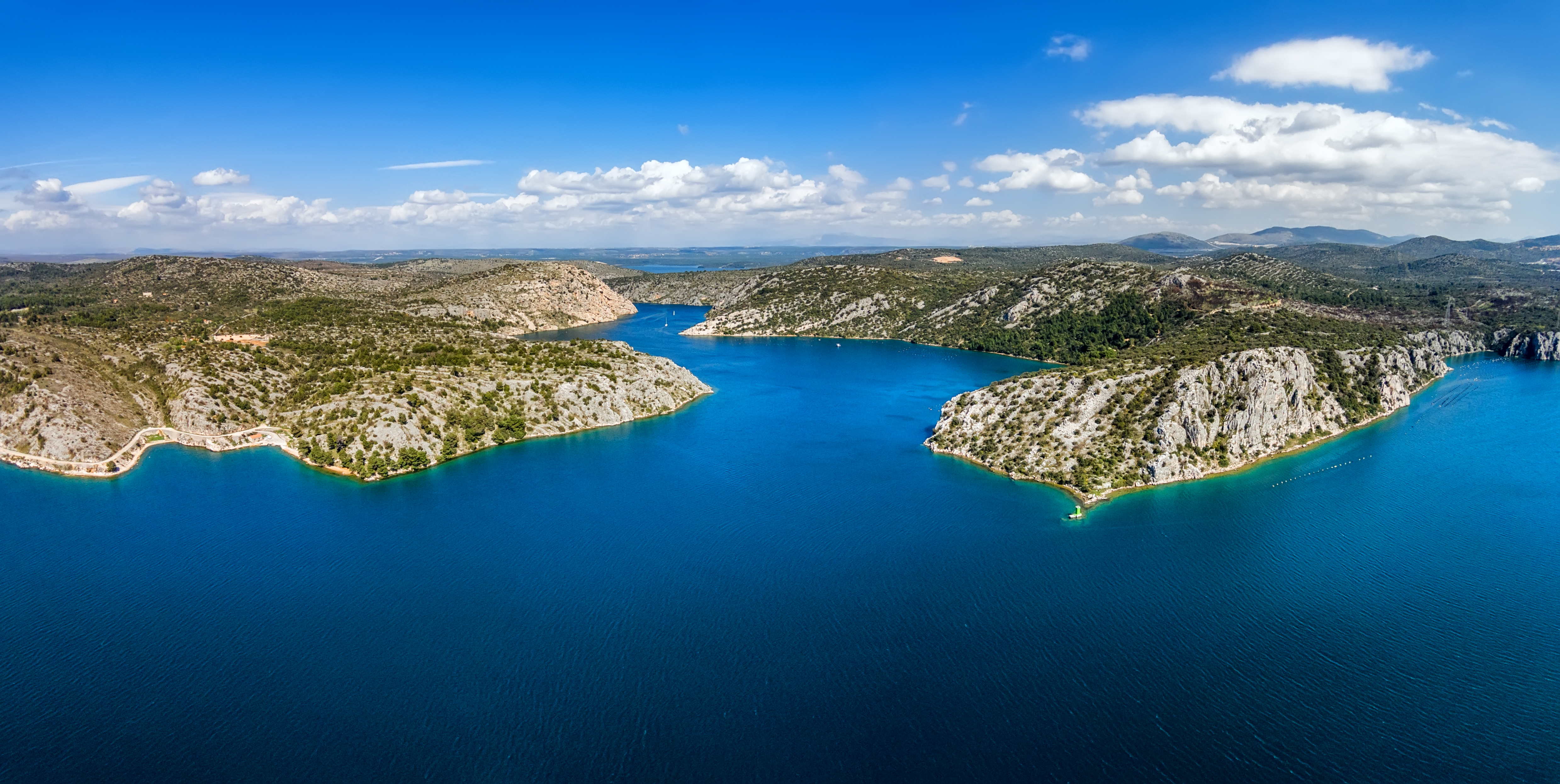|
Sanjak Of Klis
The Sanjak of Klis ( tr, Kilis Sancağı; sh, Kliški sandžak) was a sanjak of the Ottoman Empire which seat was in the Fortress of Klis in Klis (modern-day Croatia) till capture by Republic of Venice in 1648, latterly in Livno between 1648-1826. Background The Sanjak of Klis was established on 12 March 1537, after Ottoman victory in the Siege of Klis. Klis was stronghold of Uskoks and thorn in both Venetian and Ottoman side. It was captured by Ottoman forces commanded by Murat Beg Tardić on behalf of Gazi Husrev-beg who was the sanjakbey of the Sanjak of Bosnia. Administrative division The territory of the Sanjak of Klis was composed of the newly captured territories of western Bosnia, Dalmatia (with rivers Cetina, Krka and Zrmanja), Lika and Krbava. The Vilayet Croats was disestablished when it was annexed by the newly established Sanjak of Klis in 1537. The first land survey of the Sanjak of Klis was done in 1540 within the survey of the Sanjak of Bosnia. The def ... [...More Info...] [...Related Items...] OR: [Wikipedia] [Google] [Baidu] |
Sanjak
Sanjaks (liwāʾ) (plural form: alwiyāʾ) * Armenian: նահանգ (''nahang''; meaning "province") * Bulgarian: окръг (''okrǔg''; meaning "county", "province", or "region") * el, Διοίκησις (''dioikēsis'', meaning "province") or επαρχία (''eparchia'', meaning " eparchy") * lad, sancak , group=note (; ota, ; Modern Turkish: ''Sancak'', ) were administrative divisions of the Ottoman Empire. ''Sanjak'', and the variant spellings ''sandjak'', ''sanjaq'' and ''sinjaq'', are English or French transliterations of the Turkish word ''sancak'', meaning "district", " banner" or "flag". Sanjaks were also called by the Arabic word for ''banner'' or ''flag'': '' liwa (Liwā or Liwā’)''. Ottoman provinces ( eyalets, later vilayets) were divided into sanjaks (also called ''livas'') governed by sanjakbeys (also called '' Mutesarriff'') and were further subdivided into '' timars'' (fiefs held by '' timariots''), kadiluks (the area of responsibility of a jud ... [...More Info...] [...Related Items...] OR: [Wikipedia] [Google] [Baidu] |
Krka (Croatia)
Krka () is a river in Croatia's Dalmatia region, known for its numerous waterfalls. It is long and its basin covers an area of . It was known in ancient Greek as ''Kyrikos'', or may be also as ''Catarbates'' (literally "steeply falling") by the ancient Greeks, it was known to the ancient Romans as ''Titius'', ''Corcoras'', or ''Korkoras''. Course The river has its source near the border of Croatia with Bosnia and Herzegovina, at the foot of the Dinara mountain. After meandering through the Krčić canyon, it enters the karst valley of Knin through the Krčić waterfall of . At the foot of the second, called the Topoljski waterfall, of these is a spring in a cave with of passage. The river then flows through the valley, where it is fed by the Kosovčica on the left and the Orašnica and the Butižnica on the right, passing the Fortress of Knin between the last two on the way, and into the main canyon. What follows belongs to the Krka National Park. The first waterfall there ... [...More Info...] [...Related Items...] OR: [Wikipedia] [Google] [Baidu] |
1537 Establishments In The Ottoman Empire
__NOTOC__ Year 1537 ( MDXXXVII) was a common year starting on Monday (link will display the full calendar) of the Julian calendar. Events January–June * January ** Bigod's Rebellion, an uprising by Roman Catholics against Henry VIII of England, is crushed. ** Battle of Ollantaytambo: Emperor Manco Inca Yupanqui is victorious against the Spanish and their Indian allies led by Hernando Pizarro. * March – Diego de Almagro successfully charges Manco Inca's siege of Cuzco, thereby saving his antagonists, the Pizarro brothers. * March 12 – Recife is founded by the Portuguese, in Brazil. * April – Spanish conquest of the Muisca: Bacatá, the main settlement of the Muisca Confederation, is conquered by Gonzalo Jiménez de Quesada, effectively ending the Confederation in the Colombian Eastern Andes. * April 1 – The Archbishop of Norway Olav Engelbrektsson flees from Trondheim to Lier, Belgium. * June 2 – Pope Paul III publishes the encyclica ... [...More Info...] [...Related Items...] OR: [Wikipedia] [Google] [Baidu] |
Ottoman Period In The History Of Bosnia And Herzegovina
The Ottoman Empire era of rule in Bosnia Bosnia and Herzegovina ( sh, / , ), abbreviated BiH () or B&H, sometimes called Bosnia–Herzegovina and often known informally as Bosnia, is a country at the crossroads of south and southeast Europe, located in the Balkans. Bosnia and H ... and Herzegovina (first as a Sanjak of Bosnia, ''sanjak'', then as an Bosnia Eyalet, ''eyalet'') and Herzegovina (also as a Sanjak of Herzegovina, ''sanjak'', then Herzegovina Eyalet, ''eyalet'') lasted from 1463/1482 to 1878 ''de facto'', and until 1908 ''de jure''. Ottoman conquest The Ottoman conquest of Bosnia and Herzegovina started in 1384, and subsequently the Ottoman invasion expanded into the so-called Bosansko Krajište. The Kingdom of Bosnia finally fell in 1463. Herzegovina fell to the Turks in 1482. It took another century for the western parts of today's Bosnia to succumb to Ottoman attacks. Bosnia continued legally under the royal Berislavići Grabarski, House of Berislavić, ... [...More Info...] [...Related Items...] OR: [Wikipedia] [Google] [Baidu] |
Ottoman Period In The History Of Croatia
Ottoman is the Turkish spelling of the Arabic masculine given name Uthman ( ar, عُثْمان, ‘uthmān). It may refer to: Governments and dynasties * Ottoman Caliphate, an Islamic caliphate from 1517 to 1924 * Ottoman Empire, in existence from 1299 to 1922 ** Ottoman dynasty, ruling family of the Ottoman Empire *** Osmanoğlu family, modern members of the family * Ottoman architecture Ethnicities and languages * Ottoman Armenians, the Armenian ethnic group in the Ottoman Empire * Ottoman Greeks, the Greek ethnic group in the Ottoman Empire * Ottoman Serbs, the Serbian ethnic group in the Ottoman Empire * Ottoman Turks, the Turkic ethnic group in the Ottoman Empire ** Ottoman Turkish alphabet ** Ottoman Turkish language, the variety of the Turkish language that was used in the Ottoman Empire Products * Ottoman bed, a type of storage bed * Ottoman (furniture), padded stool or footstool * Ottoman (textile), fabric with a pronounced ribbed or corded effect, often made of silk or ... [...More Info...] [...Related Items...] OR: [Wikipedia] [Google] [Baidu] |
Sanjaks Of The Ottoman Empire In Europe
Sanjaks (liwāʾ) (plural form: alwiyāʾ) * Armenian: նահանգ (''nahang''; meaning "province") * Bulgarian: окръг (''okrǔg''; meaning "county", "province", or "region") * el, Διοίκησις (''dioikēsis'', meaning "province") or επαρχία (''eparchia'', meaning "eparchy") * lad, sancak , group=note (; ota, ; Modern Turkish: ''Sancak'', ) were administrative divisions of the Ottoman Empire. ''Sanjak'', and the variant spellings ''sandjak'', ''sanjaq'' and ''sinjaq'', are English or French transliterations of the Turkish word ''sancak'', meaning "district", "banner" or "flag". Sanjaks were also called by the Arabic word for ''banner'' or ''flag'': '' liwa (Liwā or Liwā’)''. Ottoman provinces ( eyalets, later vilayets) were divided into sanjaks (also called ''livas'') governed by sanjakbeys (also called '' Mutesarriff'') and were further subdivided into ''timars'' (fiefs held by '' timariots''), kadiluks (the area of responsibility of a judge, ... [...More Info...] [...Related Items...] OR: [Wikipedia] [Google] [Baidu] |
Albanians
The Albanians (; sq, Shqiptarët ) are an ethnic group An ethnic group or an ethnicity is a grouping of people who identify with each other on the basis of shared attributes that distinguish them from other groups. Those attributes can include common sets of traditions, ancestry, language, history, ... and nation native to the Balkan Peninsula who share a common Albanian Cultural heritage, ancestry, Albanian culture, culture, Albanian history, history and Albanian language, language. They primarily live in Albania, Kosovo, North Macedonia, Montenegro, Serbia as well as in Croatia, Greece, Italy and Turkey. They also constitute a large diaspora with several communities established across Europe, the Americas and Oceania. Albanians have Paleo-Balkan languages, Paleo-Balkanic Origin of the Albanians, origins. Exclusively attributing these origins to the Illyrians, Thracians or other Paleo-Balkan people is still a matter of debate among historians and ethnologists. The firs ... [...More Info...] [...Related Items...] OR: [Wikipedia] [Google] [Baidu] |
Sanjak Of Požega
The Sanjak of Pojega ( tr, Pojega Sancağı; hr, Požeški sandžak) was an administrative territorial entity of the Ottoman Empire formed around 1538. It existed until the Treaty of Karlowitz (1699), when the region was transferred to the Habsburg monarchy. It was located in present-day eastern Croatia, in the Slavonia region. The capital of the sanjak was Pojega (Croatian: Požega). History The first defter in the sanjak was held in 1540. The Sanjak of Pojega included territory between Sava and Drava rivers and at first was part of the Rumelia Eyalet. In 1541, it was included into Budin Eyalet, in 1580 into Bosnia Eyalet, in 1596 into Zigetvar Eyalet, and in 1600 into Kanije Eyalet. The Sanjak of Požega was one of six Ottoman sanjaks with most developed shipbuilding (besides sanjaks of Smederevo, Nicopolis, Vidin, Zvornik and Mohács). Toward Croatian and Slavonian border the Ottomans populated numerous Christian Vlachs, who either already lived there or who were broug ... [...More Info...] [...Related Items...] OR: [Wikipedia] [Google] [Baidu] |
Evliya Çelebi
Derviş Mehmed Zillî (25 March 1611 – 1682), known as Evliya Çelebi ( ota, اوليا چلبى), was an Ottoman Empire, Ottoman explorer who travelled through the territory of the Ottoman Empire and neighboring lands over a period of forty years, recording his commentary in a Travel literature, travelogue called the ''Seyahatname, Seyâhatnâme'' ("Book of Travel"). The name Çelebi (title), Çelebi is an honorific title meaning "gentleman" or "man of God" (see Turkish names#Surnames, pre-1934 Turkish naming conventions). Life Evliya Çelebi was born in Istanbul, Constantinople in 1611 to a wealthy family from Kütahya. Both his parents were attached to the Ottoman Empire, Ottoman court, his father, Derviş Mehmed Zilli, as a jeweller, and his mother as an Abkhazians, Abkhazian relation of the list of Ottoman Grand Viziers, grand vizier Melek Ahmed Pasha. In his book, Evliya Çelebi traces his paternal genealogy back to Ahmad Yasawi, an early Sufi mystic. Evliya Çelebi re ... [...More Info...] [...Related Items...] OR: [Wikipedia] [Google] [Baidu] |
Bosnia Eyalet
The Eyalet of Bosnia ( ota, ایالت بوسنه ,Eyālet-i Bōsnâ; By Gábor Ágoston, Bruce Alan Masters ; sh, Bosanski pašaluk), was an eyalet (administrative division, also known as a ''beylerbeylik'') of the Ottoman Empire, mostly based on the territory of the present-day state of Bosnia and Herzegovina. Prior to the Great Turkish War, it had also included most of Slavonia, Lika, and Dalmatia in present-day Croatia. Its reported area in 1853 was . Background After the execution of King Stephen Tomašević in 1463, the central part of the Kingdom of Bosnia was transformed into the sanjak of Bosnia. The Duchy of Herzegovina was added in 1483. History Establishment In 1580, Ferhad Pasha Sokolović became the first governor of the Bosnia Eyalet, as beylerbey (also referred to as "pasha"). The Bosnia Eyalet (or Pashaluk) included the Sanjak of Bosnia (central province), Sanjak of Herzegovina, Sanjak of Vučitrn, Sanjak of Prizren, Sanjak of Klis, Sanjak of Krka, and S ... [...More Info...] [...Related Items...] OR: [Wikipedia] [Google] [Baidu] |
Vilayet Croats
The Croatian Vilayet ( ota, vilâyet-i Hırvat) was a temporary borderland entity in Dalmatia in the 16th century. Its capital was Sinj. Establishment and territory Immediately after the Ottoman capture of the Dalmatian hinterland and Lika from the Kingdom of Croatia and the Republic of Venice in the 1520s, they organized it as a borderland entity and named it the Vilayet of "Croats" ( tr, Hırvat, hr, Hrvati). The southern border of the territory of this vilayet was river Cetina while north-western border was Lika and river Zrmanja. It also included region around river Krka. This territory was administratively governed as the Croatian vilayet which belonged to the Sanjak of Bosnia and listed as such in its 1530 ''defter'' (tax registry). Administration The capital of the vilayet was Sinj. Its territory was under the jurisdiction of the Skradin ''kadiluk''. Aličić claimed that territories of the Croatian vilayet and Skradin kadiluk were the same and that the official Otto ... [...More Info...] [...Related Items...] OR: [Wikipedia] [Google] [Baidu] |



.png)